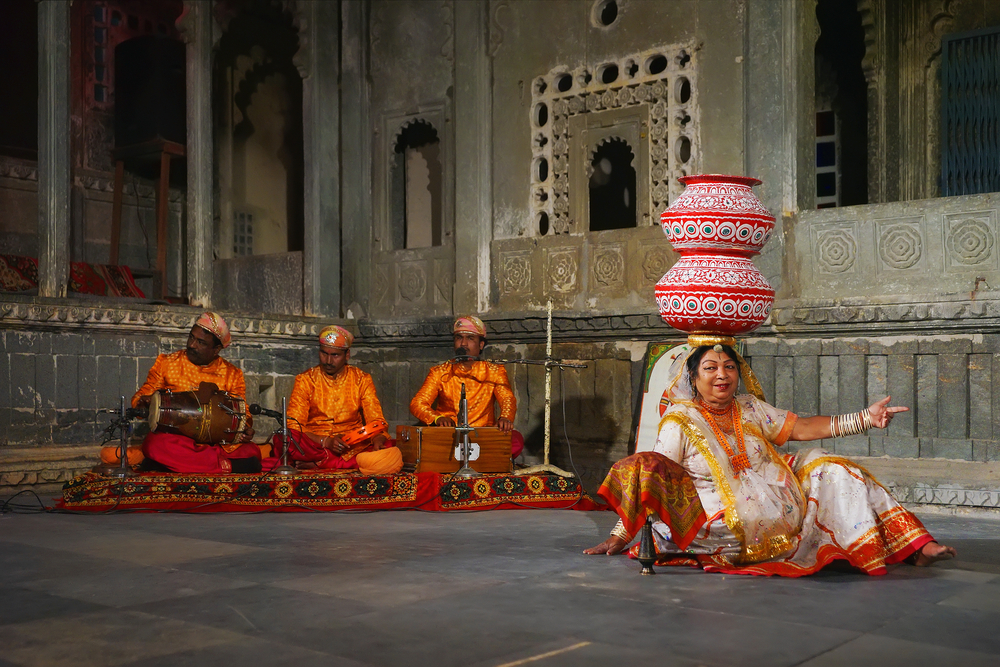A glimpse into India’s folk-dance culture
Considering how much Indians love music and dance, calling these an integral part of Indian culture is probably an understatement! Dancing is probably our favourite way to celebrate as a community and express happiness. But as an art form, there’s a lot more to dance than what we are typically familiar with or see in movies.
For anyone who’s grown up in India, the basic knowledge of dance revolves around the most popular Indian Classical dance forms, namely – Bharatanatyam from Tamil Nadu, Kathak from the northern part of India, Kathakali from Kerala, Odissi from Odisha, Kuchipudi from Andhra Pradesh and Manipuri from Manipur. Every state of India has given birth to a unique dance form, contributing to and enriching the Indian art and cultural landscape.
But these are just a few out of the various dance forms that actually exist in different parts of the country. In addition to these famous dance forms which have now gained global recognition, there are many folk and local dances that even most Indians are not aware of. These almost unknown dance forms are preserved and performed by local communities in little pockets across India. Some of us may be familiar with folk dances like Bhangra and Garba, but that’s just scratching the surface of what lies in the hinterland. Read on to find out about some of these unique dance forms and where you can possibly catch a glimpse of them.
Ghoomar in Rajasthan
A dance form originally performed by the Bhil tribe of Rajasthan, Ghoomar or Jhumar is now performed all over the state. Decked in colourful traditional attire and lots of jewellery, Rajasthani women perform Ghoomar to celebrate special occasions like Teej, Holi and even weddings. This beautiful dance form showcases the cultural heritage and traditions of Rajasthan through its signature twirling and coordinated moves. If you want to watch a Ghoomar performance in Rajasthan, the best cities to head to are Udaipur, Jodhpur and Kota. Although similar in essence, you may notice some variations in the dance form depending on which part of Rajasthan it is being performed at.
Kalbelia in Rajasthan
Source: hiveminer.com
Performed by a tribe by the same name, Kalbelia is another style of folk dance from the state of Rajasthan. The Kalbelia tribe started out as a community of snake charmers who would move from one village to the next performing their act. Conferred the title of Ian ntangible Cultural Heritage by UNESCO in 2010, Kalbelia is also referred to as the Snake Charmer’s dance. The act involves both men and women, whereby men are responsible for playing the instruments and the women perform the actual dance moves, which are considered to be quite sensuous.
Sattriya in Assam
Source: www.awesomeassam.org
Founded way back in the 15th century, the Sattriya dance form is probably one of the very few that has a connection to a specific religion or faith. The Sattriya dance was first introduced by the Vaishnava saint Sankaradeva as a means to preach and propagate the teachings of the Vaishnava faith. The actual Sattriya dance form was a mix of various other local/folk dances of Assam like Ojapali and Devadasi. Apart from the dance moves, what stands out in a Sattriya performance is also the dancers’ attire – costumes made out of Assamese Pat and Muga silk with local designs and patterns, a red bindi on the forehead and lots of jewellery on the neck, head and waist.
Bhavai in Rajasthan
One of the most well-known folk dances from Rajasthan, Bhavai’s iconic dance move involves the dancer balancing several brass pots on her head while performing tricky movements. But what stands out is the grace and strength of these women who have mastered the art form without dropping any of the pots. It is said that Bhavai dance was originally inspired by the women in Rajasthan’s arid villages who had to walk long distances to fetch water while carrying their pots on these long journeys. They acquired the balancing skill from their daily life and translated it into an entertaining dance performance.
Dumhal in Jammu & Kashmir
Source: www.gypsyescapade.com
Dumhal is one of those rare folk dance forms that is only performed by men, unlike most other dances that are primarily performed by women. Hailing from the beautiful land of Jammu & Kashmir, Dumhal dance is primarily performed by the Rauf tribe but is known to have its roots in Sufism. Legend has it that Dumhal dance form was invented by a Sufi saint. But irrespective of its origin, the dance itself is very entertaining and visually appealing, characterised by conical hats and vibrant long robes worn by the dancers.
Local folk dances are probably one of the best ways to get an insight into the culture and lives of the local community. Given the number of different micro-communities that coexist in our country, it is not surprising that they all have their own unique dance form representing their culture. So the next time you are travelling to a different part of India, try to catch a local dance performance and explore the destination in a new light, away from the busy tourist hubs!






